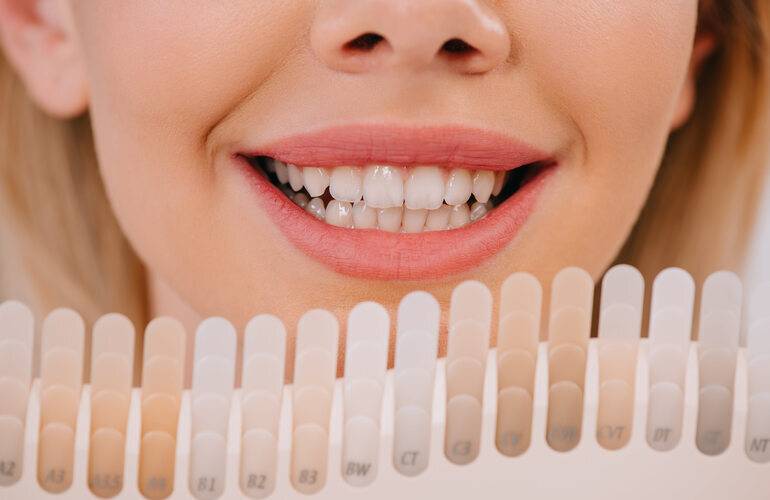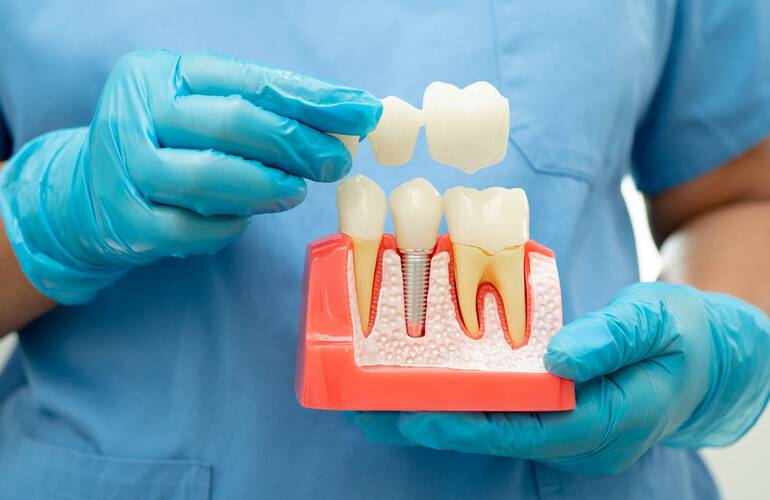A bright, white smile can boost confidence and enhance your overall appearance. At Neola Dental in Minneola, FL, we offer Philips Zoom Whitening, one of the most advanced in-office whitening treatments available today. This fast, effective, and safe procedure delivers professional-grade results, helping our patients achieve a whiter, healthier-looking smile in just one appointment.
What is zoom dental whitening?
Zoom Dental Whitening is a professional in-office teeth whitening treatment designed to remove deep stains and discoloration caused by food, beverages, smoking, and aging. Unlike over-the-counter whitening products, Zoom whitening uses a specialized whitening gel and a proprietary LED light to accelerate the process, ensuring dramatic results in just about an hour.
How does zoom whitening work?
Step-by-step procedure of zoom whitening
- Preparation: Before the procedure, your dentist will conduct an examination to ensure your teeth and gums are healthy enough for whitening.
- Protection: Your lips and gums are carefully covered to shield them from the whitening gel.
- Application of the gel: The Zoom hydrogen peroxide-based whitening gel is applied to the teeth.
- Activation with the special light: A Philips Zoom LED light is used to activate the gel, breaking down stains and discoloration.
- Reapplication: The process is repeated in three or four 15-minute sessions, depending on your desired level of whitening.
- Final touches: After the last session, a fluoride treatment is applied to reduce sensitivity.
The role of the special light in the process
The zoom advanced power LED light enhances the effects of the whitening gel by accelerating the breakdown of stains. This light-activated technology ensures even whitening and significantly reduces treatment time compared to other methods.
Benefits of zoom dental whitening
Immediate results and effectiveness
Unlike at-home whitening kits that require weeks of application, zoom whitening delivers noticeable results in a single session. Patients can achieve teeth up to eight shades whiter in just one hour.
Long-lasting effects compared to other treatments
With proper care and maintenance, zoom whitening results can last for years. Avoiding stain-causing foods and beverages, maintaining good oral hygiene, and following post-treatment care recommendations will help prolong the effects.
Potential side effects and risks
Common side effects such as tooth sensitivity
Some patients experience temporary tooth sensitivity after zoom whitening. This occurs because the whitening gel opens the enamel’s pores to remove stains, which can make the teeth more sensitive to temperature changes.
Precautions to minimize risks
To minimize sensitivity:
- Use sensitive toothpaste before and after the treatment.
- Avoid extremely hot or cold foods and drinks for the first 24-48 hours.
- Follow your dentist’s recommendations for post-treatment care.
Who is a suitable candidate for zoom whitening?
Zoom whitening is ideal for individuals who:
- Have healthy teeth and gums.
- Have yellow or stained teeth due to food, drinks, smoking, or aging.
- Do not have severe tooth sensitivity or gum disease.
- Are not pregnant or breastfeeding.
- Have realistic expectations about whitening results.
In-office vs. at-home zoom whitening options
While Philips Zoom offers both in-office and at-home whitening solutions, the in-office treatment provides the fastest and most dramatic results. The at-home option includes custom-made trays and a professional-grade gel but requires multiple applications over a few weeks to achieve similar results.
Using Philips zoom for teeth whitening treatment
Is Philips Zoom whitening worth it?
Philips Zoom is one of the most effective professional whitening treatments available today. Unlike generic whitening products, it is specially formulated to be safe and highly effective, making it a worthwhile investment for those looking for quick and long-lasting results.
What not to do after Philips Zoom whitening?
To maintain your results, avoid:
- Dark-colored foods and drinks (coffee, red wine, berries, soy sauce) for at least 48 hours.
- Smoking and tobacco products, which can stain teeth.
- Acidic or overly hot and cold foods, as your teeth may be more sensitive.
Do dentists use Philips Zoom?
Dentists worldwide trust Philips Zoom for professional teeth whitening due to its advanced formula, proven effectiveness, and minimized sensitivity. At Neola Dental, we use Philips Zoom to provide our patients with safe and superior whitening results.
Which is better: Philips Zoom or Opalescence?
Both Philips Zoom and Opalescence are professional whitening treatments, but Philips Zoom is preferred for fast, in-office results, while Opalescence offers more flexibility with at-home options. If you are looking for quick and dramatic whitening in just one visit, Philips Zoom is the better choice.
At Neola Dental, we are proud to offer both: zoom whitening and Opalescence whitening, to suit the needs and preferences of our patients. Each treatment has its unique benefits, and choosing the best option depends on your goals and dental condition.
Philips Zoom is renowned for delivering fast, dramatic results in just one visit. This in-office whitening system uses a powerful LED light to accelerate the whitening process, making it an excellent choice for those looking for immediate, visible results. It’s especially effective for patients with deep stains caused by food, drinks, or aging.
On the other hand, Opalescence offers both in-office and at-home options. The Opalescence in-office treatment uses a powerful gel activated by a special light, and the at-home treatment involves custom trays for gradual whitening. Opalescence is a great choice if you prefer a more customizable experience or need a more gradual whitening process.
Ultimately, Philips Zoom is ideal for those seeking quick, one-time results, while Opalescence offers more flexibility with options tailored to your schedule and whitening goals. At Neola Dental, our team will help guide you to the best choice based on your needs, ensuring a brighter smile with the most effective treatment for you.
Is Philips Zoom Whitening painful?
Most patients experience little to no discomfort during the treatment. Some might feel mild sensitivity afterward, which typically subsides within 24-48 hours. Using a desensitizing toothpaste and following your dentist’s aftercare instructions can help alleviate any discomfort.
Achieve a brighter smile at Neola Dental
If you’re looking for a fast, safe, and professional teeth whitening solution, Philips Zoom Whitening at Neola Dental is the perfect choice. Contact us today to schedule your appointment and take the first step toward a brighter, more confident smile!




